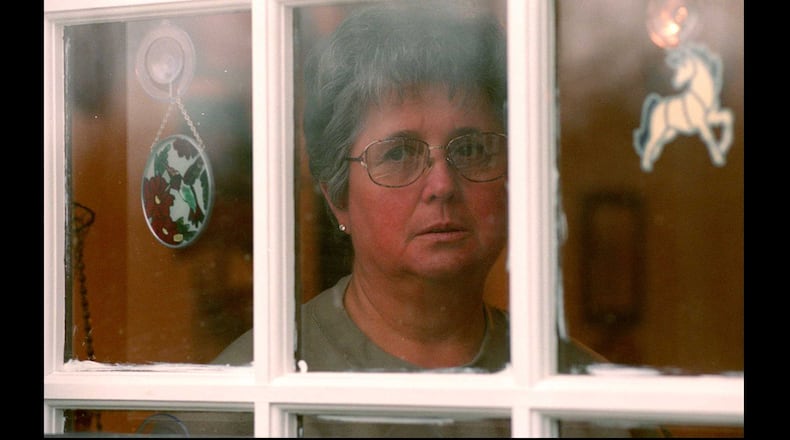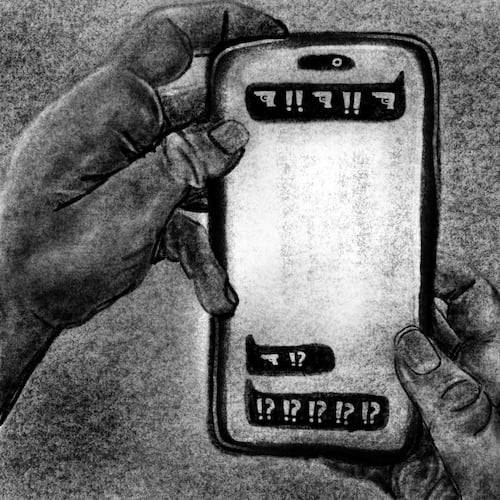(This story was originally published Jan. 17, 1999)
Mary Stoner has stopped making a daily walk up the hill behind her home to her murdered daughter’s grave. The trips did not ease her aching heart.
It’s been 20 years since 12-year-old Mary Frances was kidnapped moments after stepping off the school bus, just yards from the front door of her rural Bartow County home. The preteen was taken to some woods just beyond the Floyd County line, where she was raped and her skull was crushed with rocks.
Stoner’s little girl would have turned 32 this month. She would have been a woman, possibly a mother. Instead, for her mother, Mary Frances is forever a young girl on the verge of becoming a teenager.
Credit: Provided photo
Credit: Provided photo
It’s been almost four years since her murderer, Darrell Gene Devier, was executed on May 17, 1995, at 1:28 p.m., but Stoner is still looking for the peace that people touched by tragedy talk about when they say they want “closure.” They believe that somehow, things will get better when the killer is executed.
That wasn’t the case for Mary and Roy Stoner.
“We were glad everything was over because we had been through so many trials and so many appeals. That part was at an end,” Mary Stoner said.
“But you can’t erase it,” said Roy Stoner. “Nobody can erase it for you. People tell you to just forget about it and get on with your life. But you can't do that. I still remember what happened.”
Grief experts and those who have mourned agree that the process is different for each person. Despite those who say the execution of their loved one’s killer meant for them that a tragic episode had ended, there are others, like the Stoners, who found that it did not return them to the world they had known.
“Every time something is on TV or in the newspapers, it opens up all the hurt and brings back all the bad memories,” Mary Stoner said.
She loves talking about her daughter — just not her death.
The subject of what executions achieve for the families of murder victims is likely to come up with growing frequency. After years of arguments from death penalty proponents that too much time passes between conviction and punishment, executions nationwide are coming in greater numbers and at faster rates, primarily because many cases finally have run their legal course. Also, federal and some state laws have streamlined the appeals process.
Credit: Ga. Dept. of Corrections
Credit: Ga. Dept. of Corrections
Devier was the 20th person to die in Georgia’s electric chair since the U.S. Supreme Court approved Georgia’s current death penalty law in 1976 and the state resumed executions in 1983. There have been three more since — two in November 1996 and another last June.
Nationwide, there have been 500 executions since 1976, including 68 last year, 74 in 1997 and 45 in 1996. Richard Dieter of the Death Penalty Information Center in Washington said there could be as many as 80 executions in 1999.
Despite the Stoners’ hopes, the day after Devier was executed, they did not wake up to the prayed-for peace.
“We will never stop thinking about her,” Mary Stoner said of her daughter.
Robert Cushing, director of the national Murder Victims’ Families for Reconciliation, said one reason some people don’t get the feeling of completeness they expected from an execution is that closure is not a single event, but a process that takes time — a lot of time. He said he is still reeling from his father’s murder in the doorway of his home June 1, 1988. “It’s only been 10 years,” he said.
“Closure to me is finding out how to heal, “said Cushing. “It’s not ... ‘we’ve closed the casket, we’ve dug the grave.’ It’s not about the trial getting over. It’s not about the execution. It’s a process. I don’t know if I ever reach forgiveness.”
Cushing’s process is continuing, as is the Stoners’.
For a time after her daughter’s death, Mary Stoner went daily to her daughter’s grave at the top of the hill behind her house. She would sit for hours in the silence, in the sun shining through the trees, wondering how her life would have turned out if ...
Each time, she left the grave site of her “Sweetpea” in tears. It broke her husband’s heart, so finally he told her to stop or he would have their daughter’s body moved.
So now she stands at the kitchen window, telling herself the grave up the hill is for the living.
“She’s not there” she said. “She’s my beautiful angel and that’s for us. This is where she is resting. ... I go up there and just sit and think of things.”
Like The Atlanta Journal-Constitution on Facebook | Follow us on Twitter
The Stoners said Devier’s execution changed only one thing for them: They are now alone with their grief, no longer in the public eye. Devier is still as much a presence in their daily lives as the ghost of their eighth-grader.
“It will probably be impossible for me or Mary to go through life without someone bringing it up. They don’t even have to bring it up. It’s just there. And people will come up and just hug me,” Roy Stoner said.
“You have to just go day-by-day and don’t let people tell you that ‘you need to get over it and don’t cry,’ ” Mary Stoner said.
About the Author
Keep Reading
The Latest
Featured




